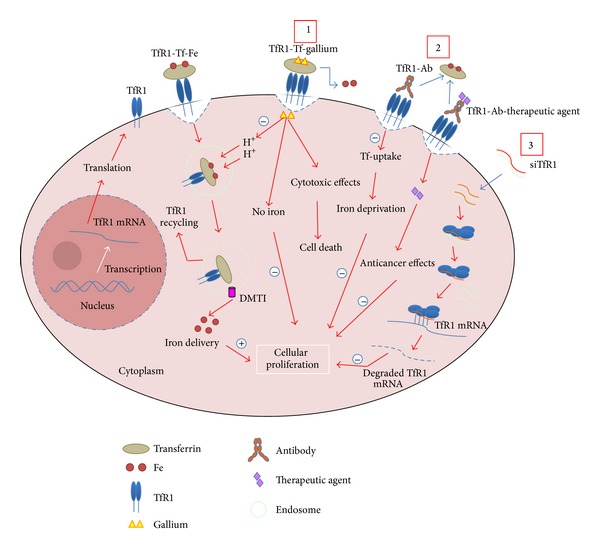Figure 5.

The diagram shows cellular uptake of iron by internalizing the transferrin-iron complex through TfR1-mediated endocytosis and summarizes the main therapeutic strategies through TfR1. 1: gallium binds avidly to transferrin, competing with iron (Fe), to form transferrin-gallium complexes, which in turn binds TfR1/CD71 on the surface of neoplastic cells containing high density of TfR1. Gallium, delivered in the cytoplasm, may be capable of interfering with the intracellular release of iron from the endosome to cellular compartments. Gallium also has direct cytotoxic effects resulting in cell death. 2: monoclonal antibody (Ab) against TfR1 binds TfR1 on the cell surface overexpressing the receptor, like in tumor cells, by competing or not with Fe-transferrin complexes depending on the location of the epitope on the receptor to which the antibody binds. This activity, in turn, results in iron deprivation and cell proliferation inhibition. Other types of antibodies have been engineered to deliver therapeutic agents with anticancer effects. 3: small interfering RNA (siRNA) approach. siRNA, alone or complexed, by transit across cellular membrane, are delivered to cytoplasm, where by classical Dicer-RISC-pathway-unwinding-mRNA recognition-cleavage-mRNA degradation could drive TfR1 downregulation. Both three proposed mechanisms potentially conduct to the reduction of iron in the cytoplasm of neoplastic cell and thus to the inhibition of cellular proliferation.
